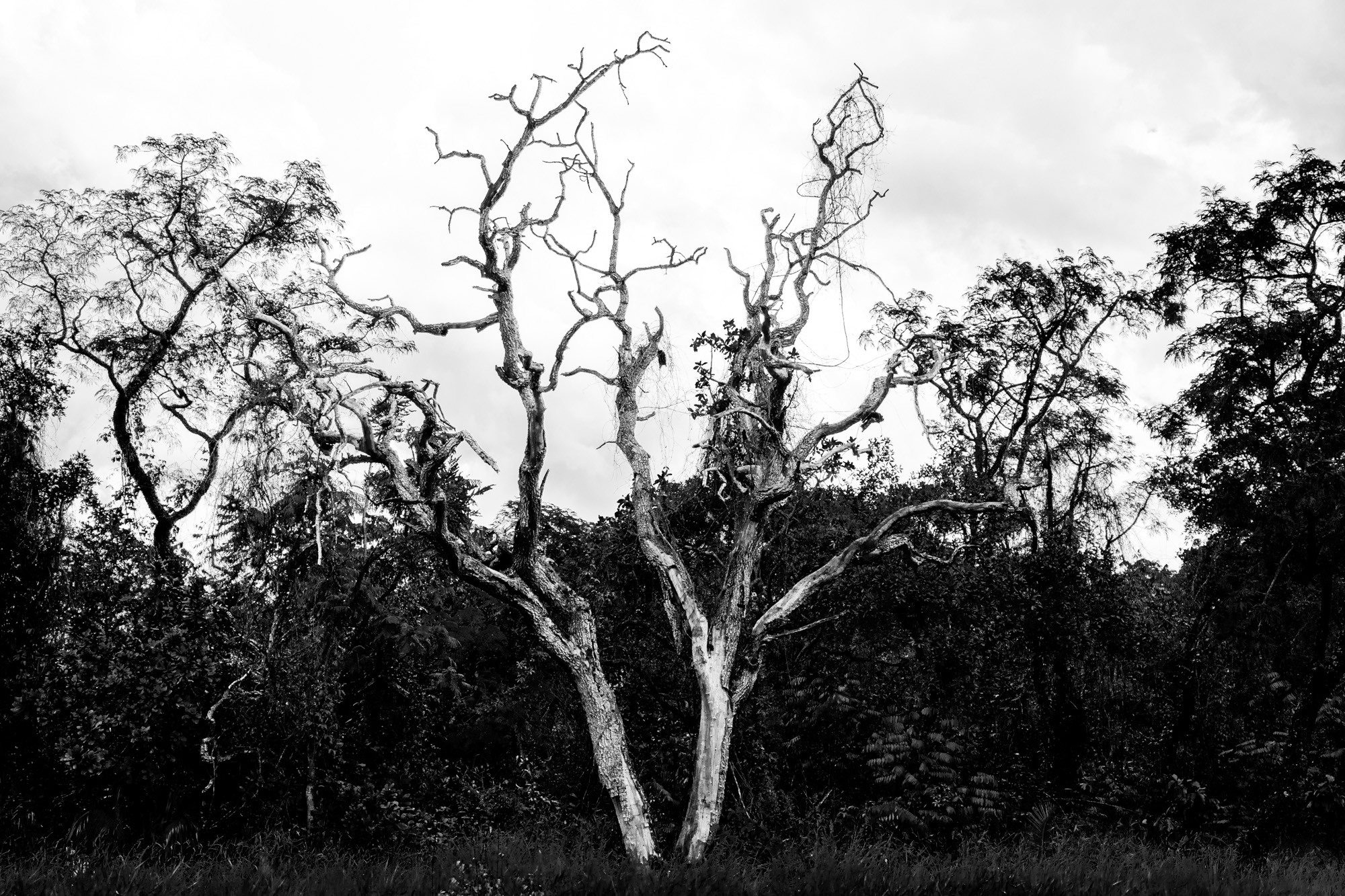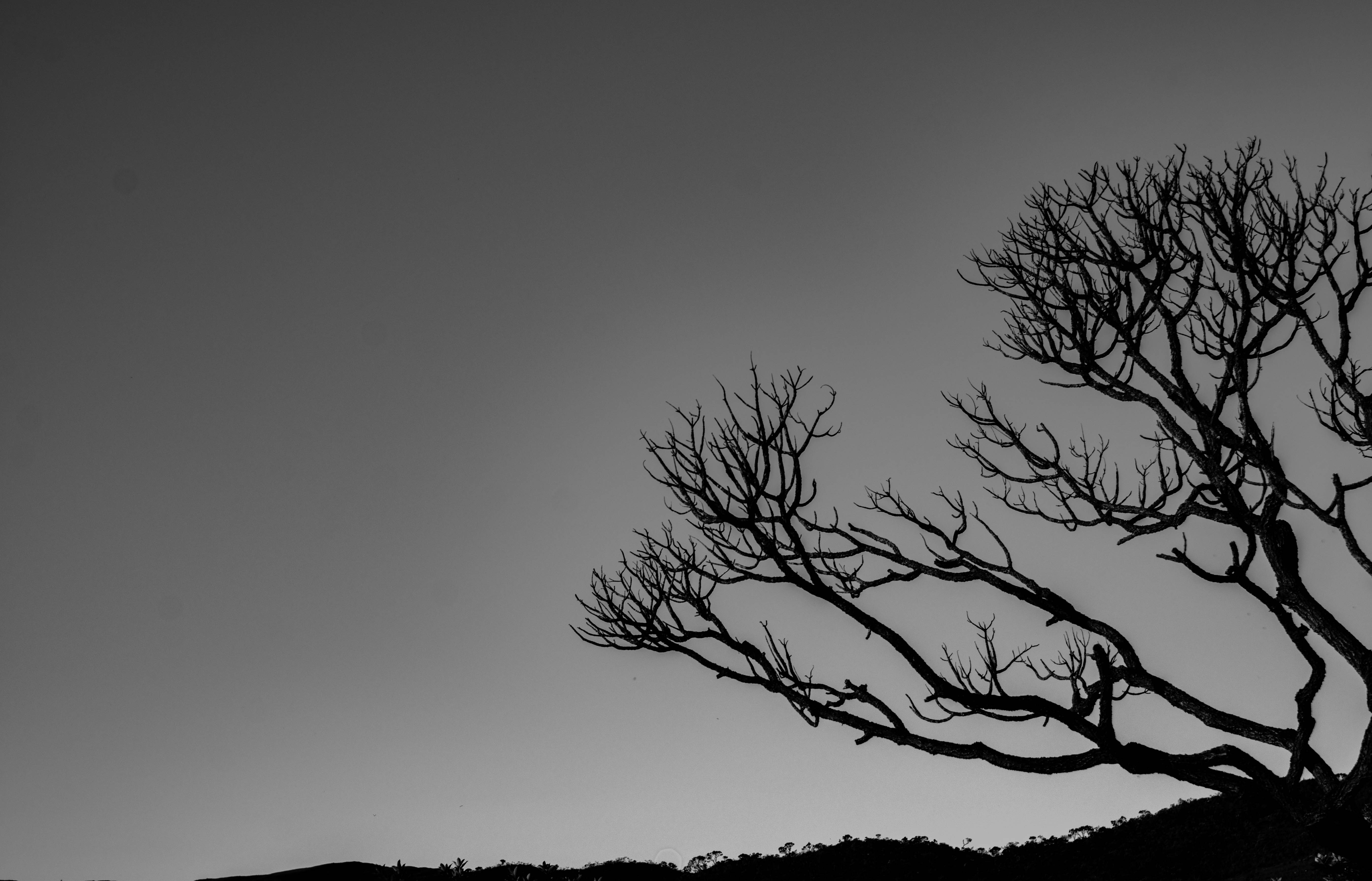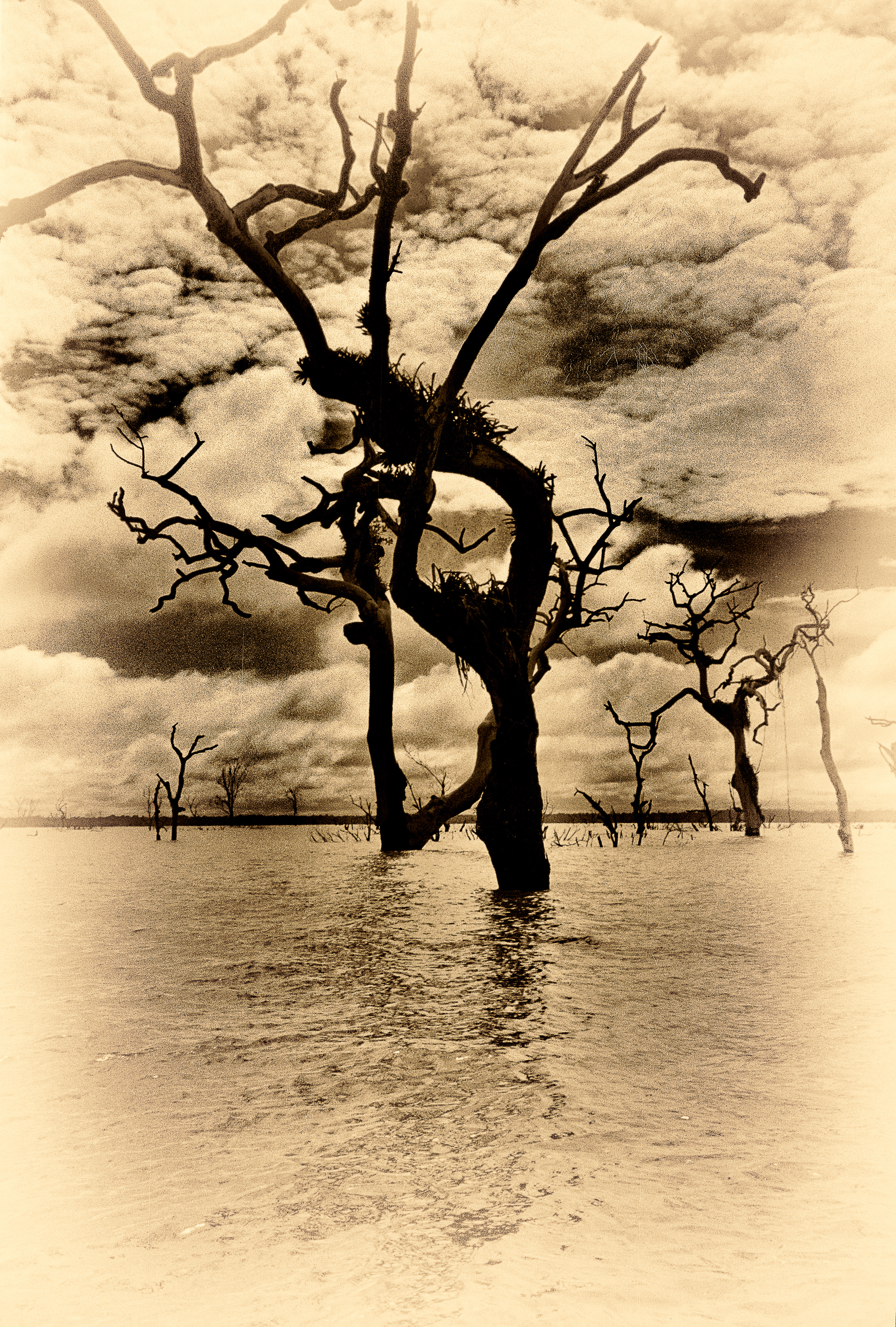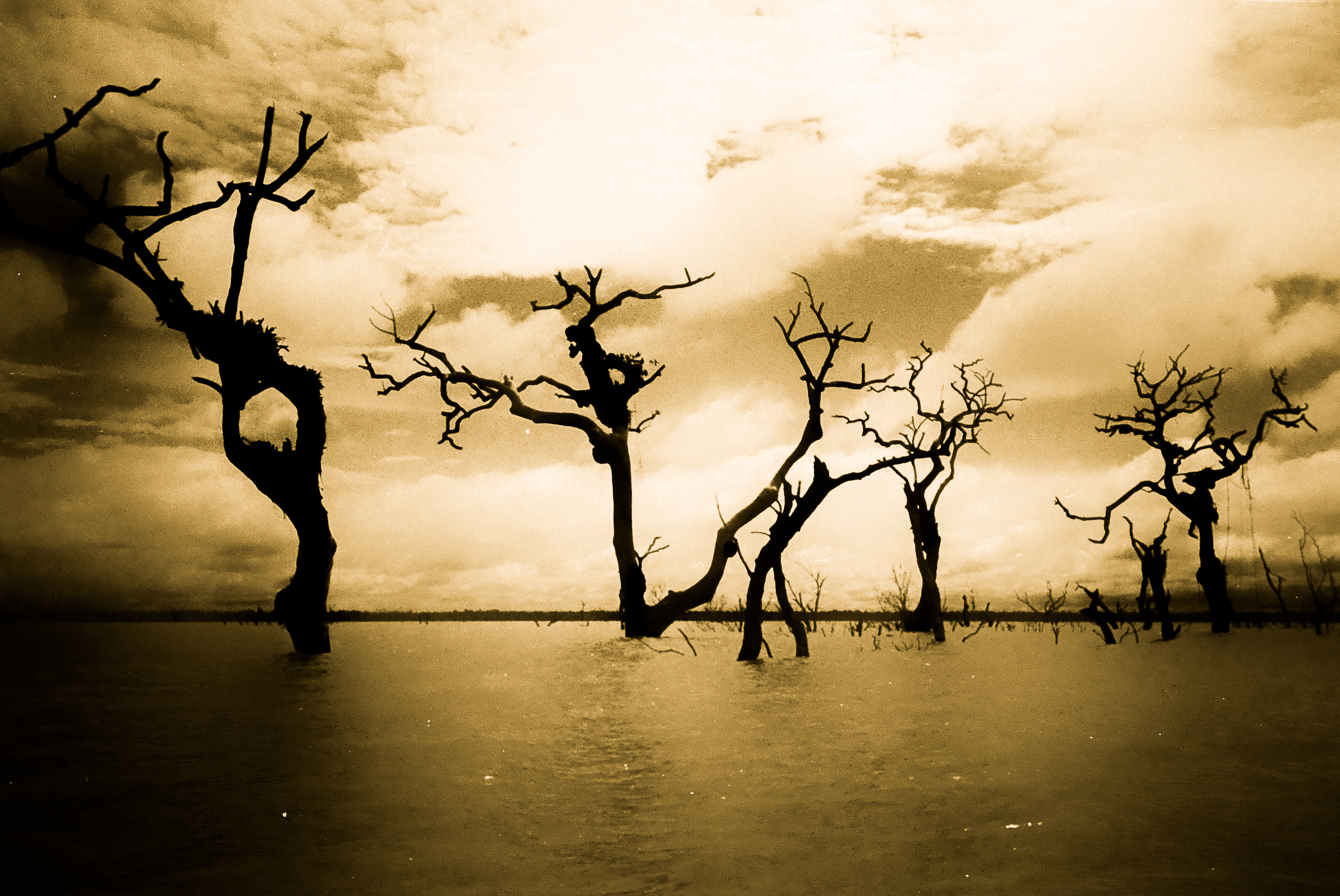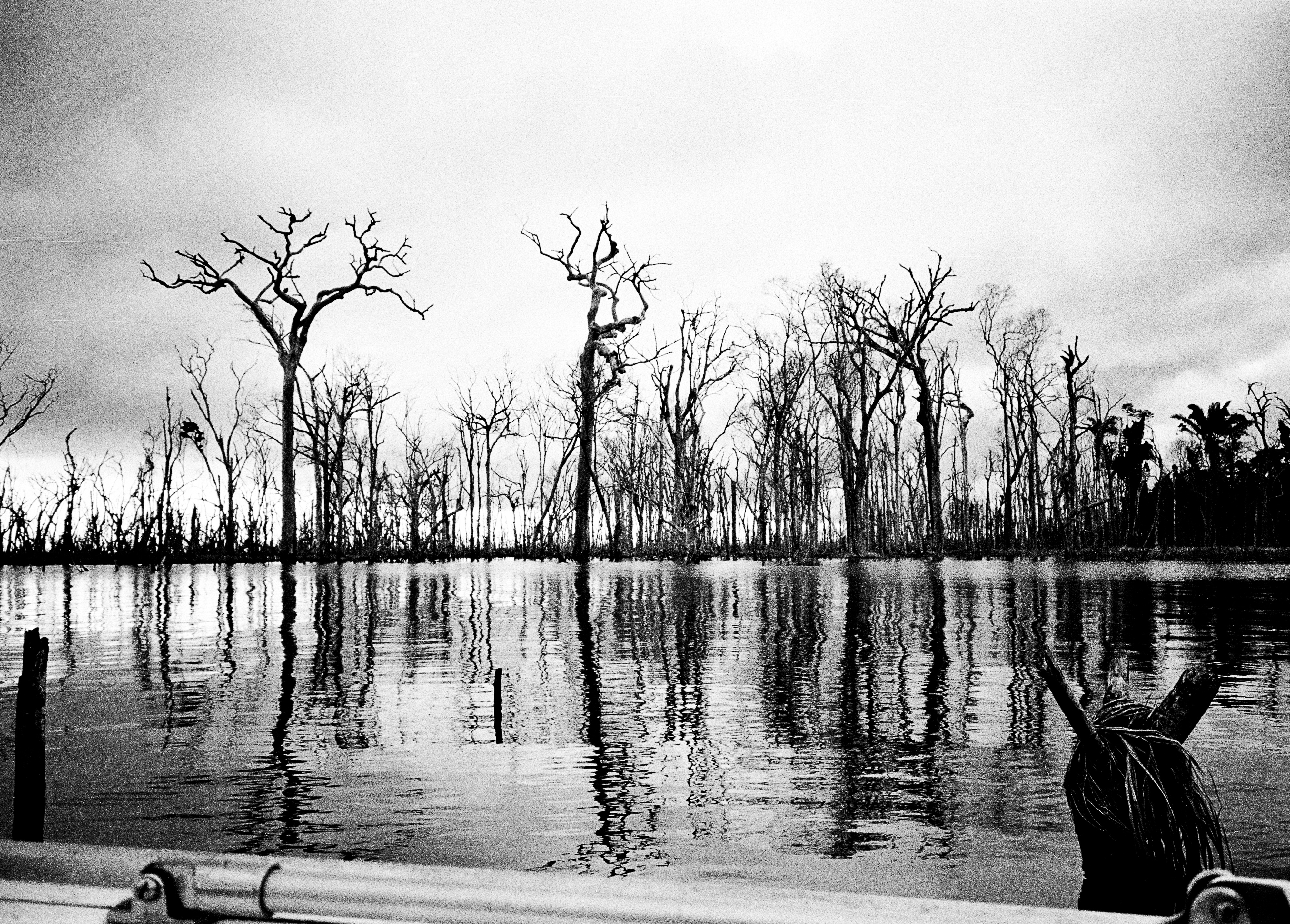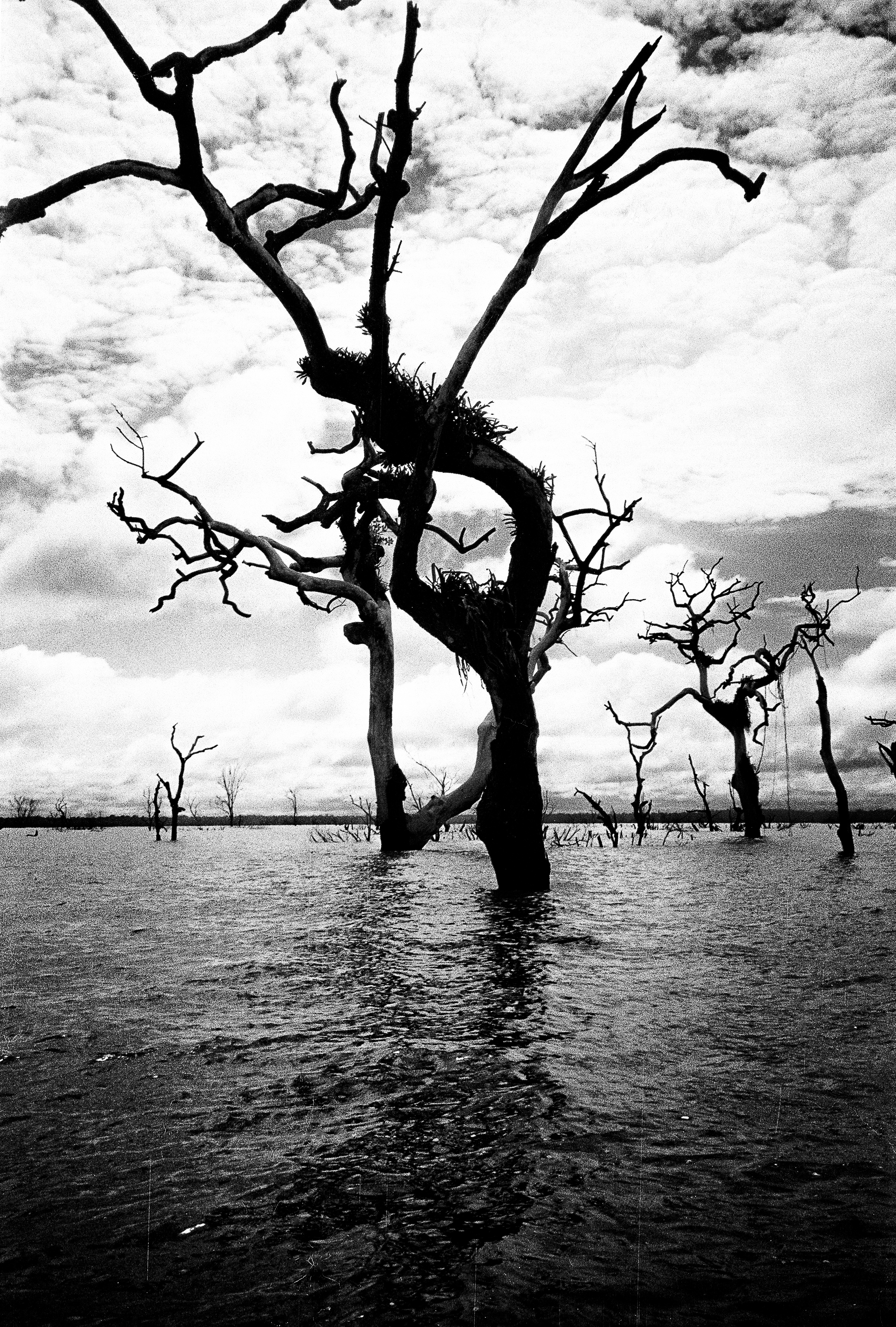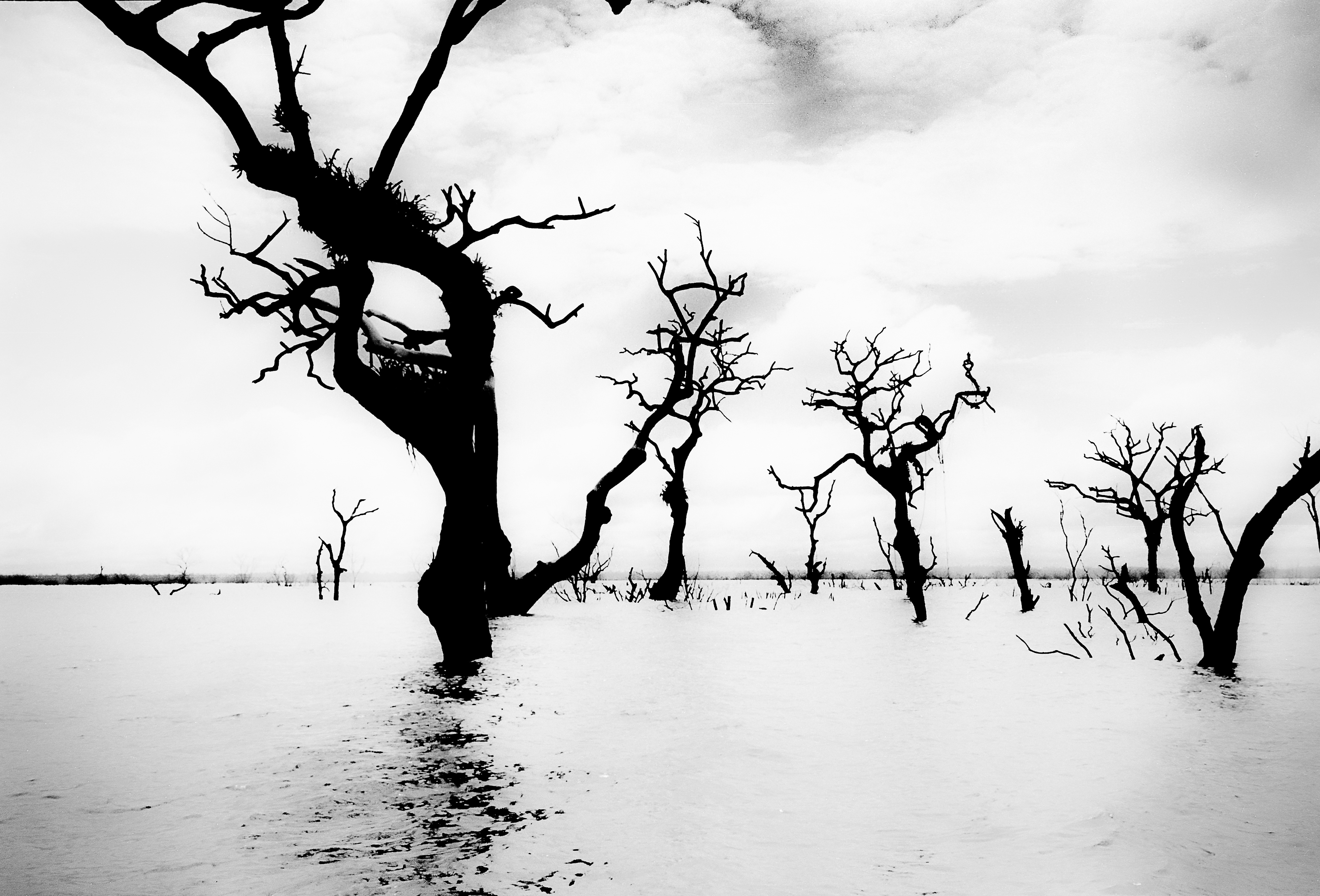Standing Dead Trees
The trees have always fascinated me.
I was born and raised on a farm where there were several stretches of natural forests, streams, and a relatively large river. I therefore have good reason to love nature. All this was taught to me by my parents and brother and older sisters. Because I am strictly against any form of deforestation it has always caused me suffering to see a tree being cut or to see it die, even from natural causes.
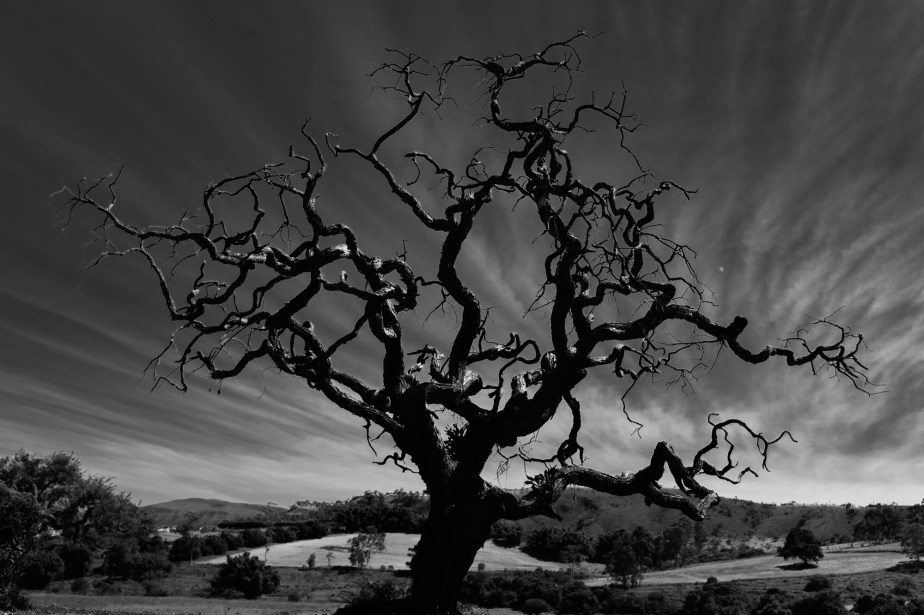
There are many natural causes why a tree dies. But besides that there are more than a few being cut down, there is a cause of death which is a slow form of deforestation by which a tree is isolated from a forest formation and this isolation leads to its death over time.
These photos that I show on this page are basically trees that have been isolated due to the monoculture of extensive sugar cane, soy beans and orange plantations, all very common activities in the State of São Paulo, SE Brazil, where I live.
I see the branches of these dead trees pointing to the heavens as in a cry of protest for being isolated from the forest. And so they remain standing for many years, resisting time and screaming at those who have promoted their death.

“Moon over a standing dead tree”

New Series: aggregated update on May 14, 2020.
Dead trees after the closure of the Tocantins-Pará state dam, Brazil at the Tucuruí Hydroelectric Plant in 1984.
The photographs were taken in 1988 on Fuji Superia 100 film and digitized on a Plustek 8200i SE scanner and the files processed on Lightroom.
The Tocantins River dam was built at the time without the vegetation, the forest itself was removed and evidently a large number of gigantic trees died. This caused a serious problem of hypoxia in the reservoir water due to the decomposition of the forest’s organic matter. Due to the generation of large amounts of carbon dioxide and hydrogen sulphide, there were serious corrosion problems in the plant’s equipment.
Of course, many other environmental and social problems were generated by the construction of this plant, especially downstream, such as the reduction of fishing in riverside communities.
The vision I had in 1988 when I took these photographs is still in my mind. A terrifying, frightening sight with all those dead trees standing. A scene of great destruction.





